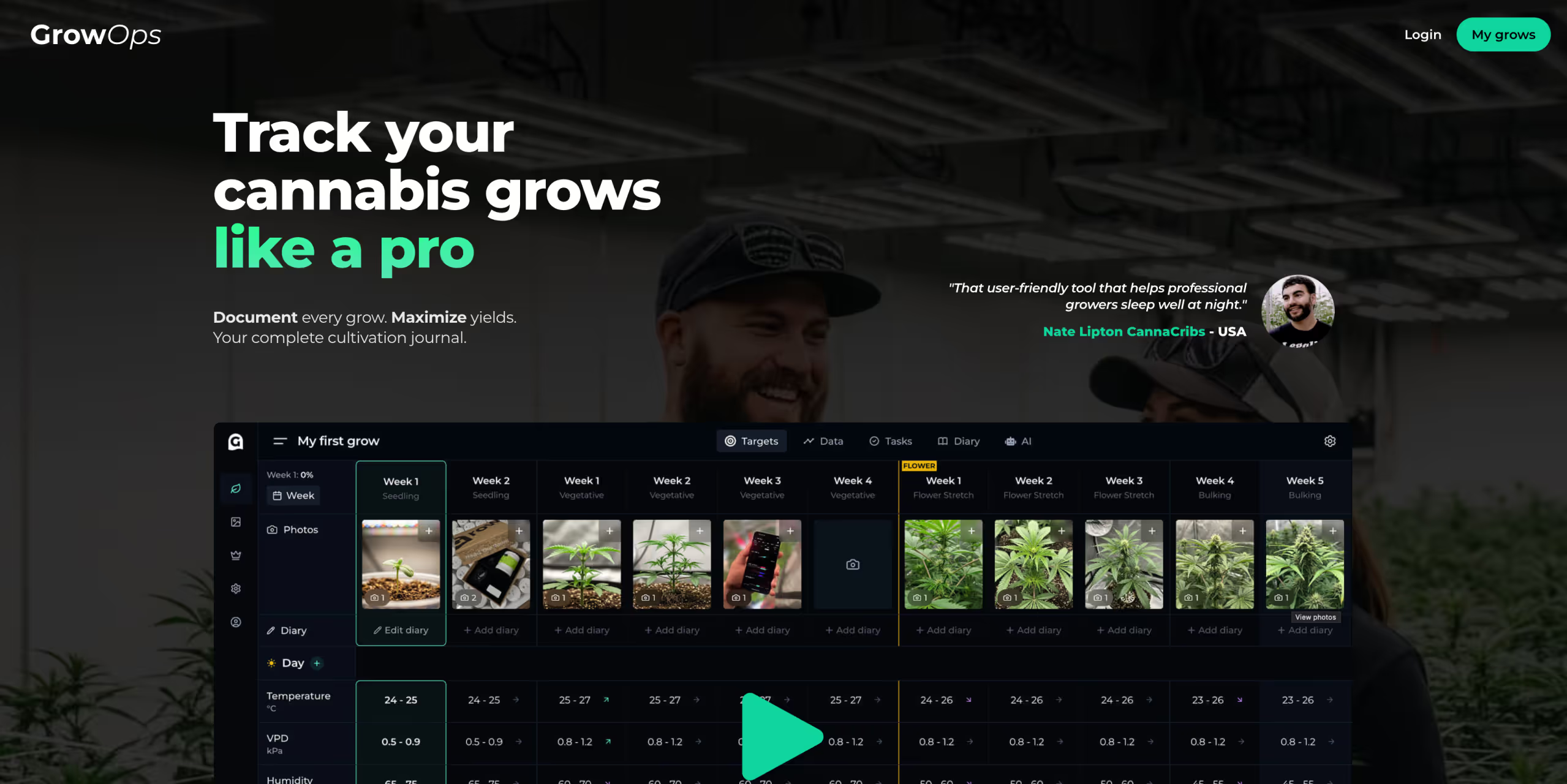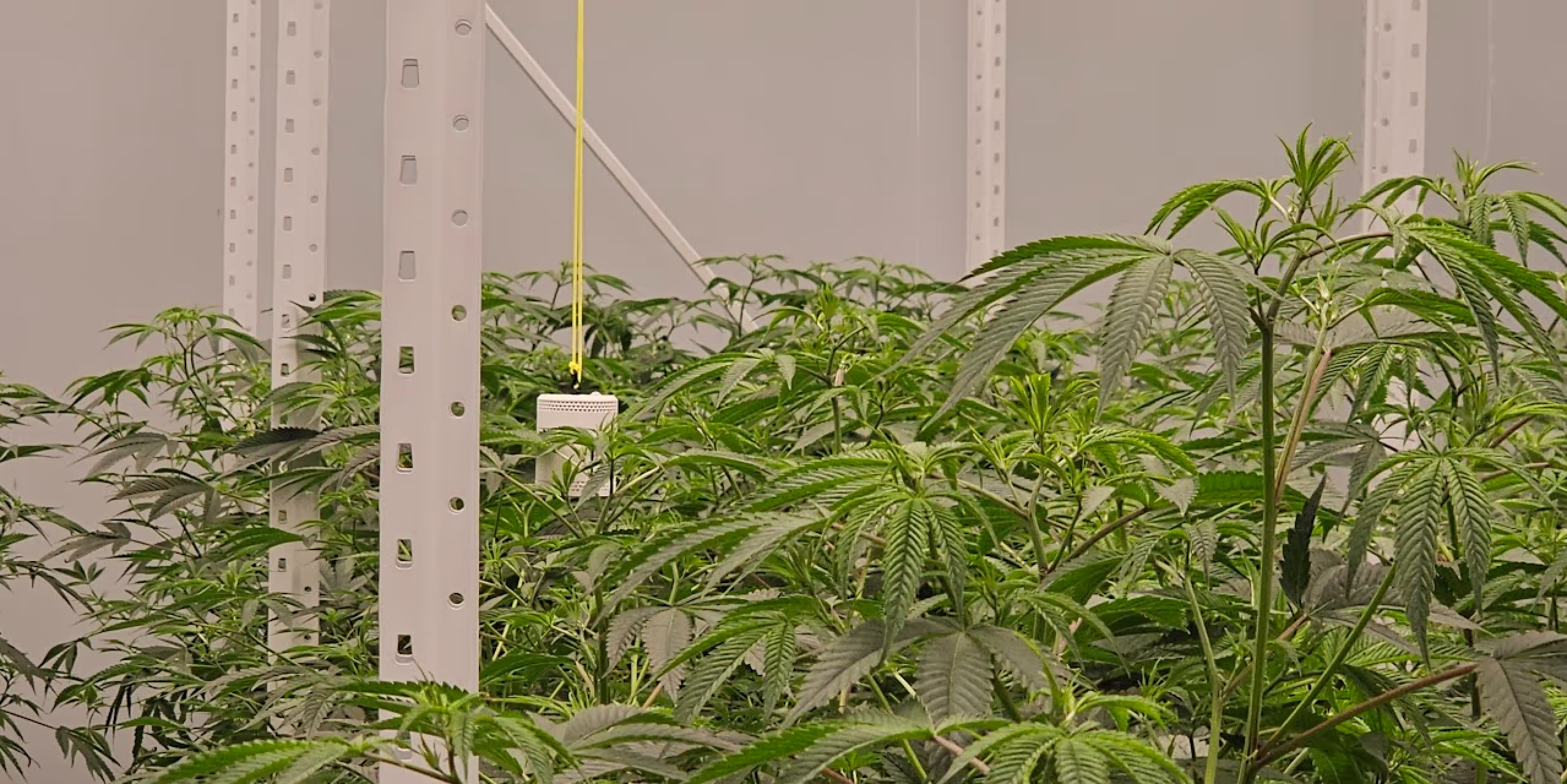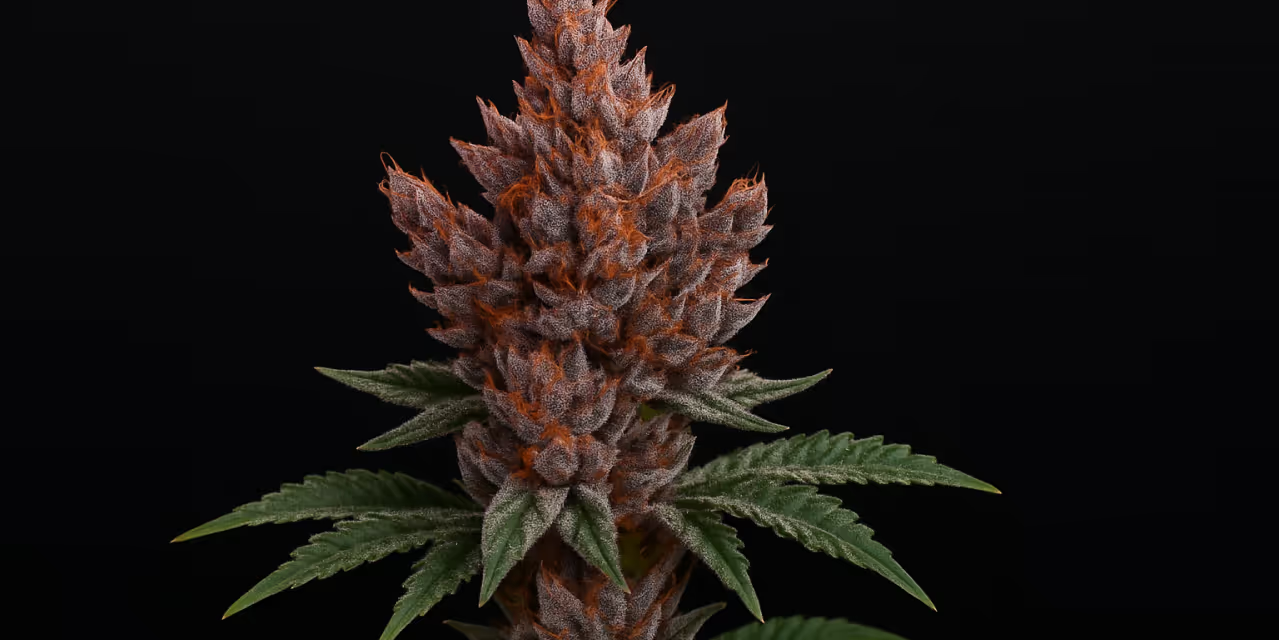What is the ideal leaf surface temperature for LEDs?


When it comes to indoor growing, understanding the environmental conditions within your grow room can mean the difference between thriving plants and lacklustre growth.
One such critical aspect is leaf surface temperature (LST), a key player in plant health that often flies under the radar.
With the rise of LED lighting in indoor growing, the spotlight has turned to how these advanced lights affect LST and, in turn, plant vitality.
LED grow lights have revolutionised indoor growing with their energy efficiency and bespoke light spectra, offering a tailored approach to plant lighting.
But how do LEDs impact the temperature of the leaf surfaces that grow beneath them?
This post delves into the ideal LST for plants under LED lights, exploring how to measure it, the difference it makes, and tips to maintain the perfect thermal environment for your plants.
Disclaimer: Any information given on this site is for educational purposes only. Please ensure if you’re growing cannabis, you’re doing so in accordance with the law and subject to appropriate permissions and licenses of the applicable country.
Understanding leaf surface temperature (LST)
LST is a critical indicator at the heart of plant vitality, often overshadowed by more apparent factors like soil moisture or light intensity.
Yet, LST holds the reins to many of a plant's internal processes, from photosynthesis to transpiration.
What is leaf temperature? And how is it different from the ambient air temperature surrounding our plants?
Leaf surface temperature is exactly what it sounds like—the temperature of a leaf's surface.
Why do we measure leaf temperature?
We measure leaf temperature to monitor plant health and ensure optimal conditions for growth.
LST affects photosynthesis, transpiration, and nutrient uptake, making it a crucial indicator of a plant's potential to thrive.
By understanding LST, you can make informed decisions about lighting, watering, and your growing environment to promote healthy, robust plants.
LST can differ significantly from ambient room temperature
This is due to a number of factors, including light exposure, air movement, and the plant's own water loss mechanisms.
When leaf temp can sway the course of growth, influencing everything from nutrient uptake to the plant's basic metabolic rate, there’s a balance to be struck, and under LED lights, this balance takes on new nuances.
LEDs, with their capacity to tailor light spectra and intensity, offer a unique influence on the temperatures of leaves.
Unlike traditional HPS (high pressure sodium) lights, LEDs can provide high-intensity light with less heat, altering the dynamics of leaf surface warming and cooling.
This shift affects how your plants grow directly and opens up new considerations for managing the ambient temperature and relative humidity when growing indoors.

What affects leaf temperatures?
While lighting plays a large part in determining the temperatures your plant’s leaves are exposed to, it's just one piece of a larger puzzle.
Several other interconnected factors come into play, each contributing to leaf temperature dynamics.
Understanding these elements is crucial for creating an optimal environment that optimises the health of your plants.
Ambient air temperature
The ambient temperature of air in a growing area plays a crucial role in shaping the thermal comfort of your plants. It is the backdrop for your grow area’s climate, directly impacting the leaf surface temperature.
Keeping a close eye on ambient temperature can help you anticipate changes in leaf surface temps, allowing for proactive adjustments.
Relative humidity
High humidity can reduce evaporation from the surface of leaves, leading to increased leaf temperature, while low humidity can enhance cooling through transpiration.
Too much humidity can slow down the rate of transpiration, leading to higher leaf temps, whereas lower humidity levels might increase transpiration, potentially cooling the leaves down.
This delicate balance between air temperature and humidity is what shapes the vapour pressure deficit (VPD), a critical concept that influences transpiration and, consequently, leaf surface temps.
We’ve covered the topic of VPD from many angles; if you’re looking for more info on VPD, check these posts:
- 5 ways vapour pressure deficit can improve your indoor grow.
- VPD and cannabis: A complete guide
- Discover the best VPD for seedlings to optimise your grow
- Uncover your target VPD for veg and elevate your grow
- Dial in your indoor grow: The best VPD for flowering
Lighting
The intensity and type of light can raise the temperature of a leaf's surface. The distance between LED lights and plant leaves can also significantly affect LST.
LEDs, known for their cooler operation (minimising unwanted infrared radiation), might not raise leaf temps as much as HPS lighting. However, the intensity and proximity of the light can still cause fluctuations.
You need to understand how different lighting technologies affect both air temps and plant temperatures and contribute to creating the ideal environment for your growth.
This is where the concept of leaf temp vs room temperature becomes particularly relevant. You need to monitor the difference between these two temperatures to ensure the leaves are not experiencing excessive heat or cold, which can stress the plant.
Air movement
Good air circulation helps dissipate heat away from the surface of leaves, keeping room temperature in check.
Another factor to consider is air movement within the growing space. Proper ventilation and air circulation can help prevent higher temperatures and hot spots.
Air movement can help ensure a uniform, optimal temperature throughout the grow area, affecting leaf surface temperatures positively.
Cooler ambient temps brought about by good airflow can counter the heat stress that might be caused by your grow lights, leading to a more stable and suitable environment for your plants.
Transpiration
The process by which plants release water vapour from their leaves helps to cool plants in a similar way to perspiration in humans.
Plant density and positioning
Dense foliage can trap heat and increase LST, while the positioning of leaves can affect their exposure to light and airflow.
When you manage these factors, particularly in controlled environments like LED-lit growing spaces, you can help ensure optimal leaf temperatures for vigour and productivity.
Plant physiology and stage of growth
Lastly, the plant's own physiology and stage of growth can influence how it regulates its own leaf surface temperature.
Some plants have evolved mechanisms to retain heat or reflect sunlight, impacting their surface temperature under artificial lighting like LEDs.
Additionally, your plants' growth stage might dictate their temperature tolerance and requirements, so you must adapt your lighting and environmental controls accordingly.
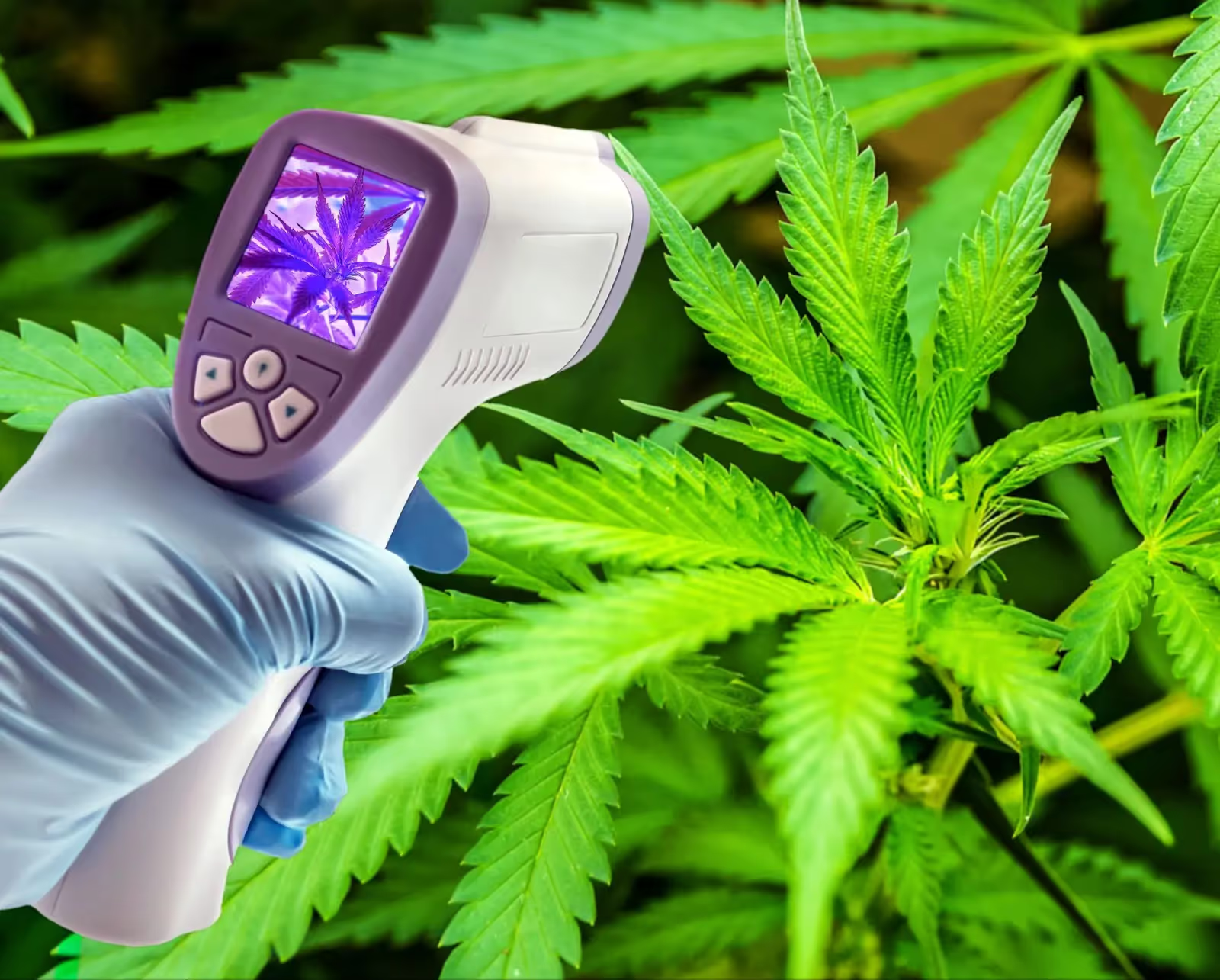
How does leaf temperature affect photosynthesis?
Leaf temperatures play a significant role in photosynthesis. At the ideal temperature, the enzymes that drive photosynthesis work efficiently, converting light into chemical energy.
But, if leaf temperatures are too high or too low, these enzymes become less effective, slowing down photosynthesis.
This can lead to reduced plant growth and lower yields overall. So, maintaining ideal leaf temperatures is crucial for maximising photosynthetic activity and ensuring healthy plant development.
The ideal LST facilitates optimal photosynthetic activity and drives your plant's transpirational cooling, a natural process of releasing water vapour through its leaves. This plays a large part in nutrient absorption and temperature regulation.
Getting this temperature right, especially under the specific light conditions that LEDs provide, is key for healthy, robust plant growth.
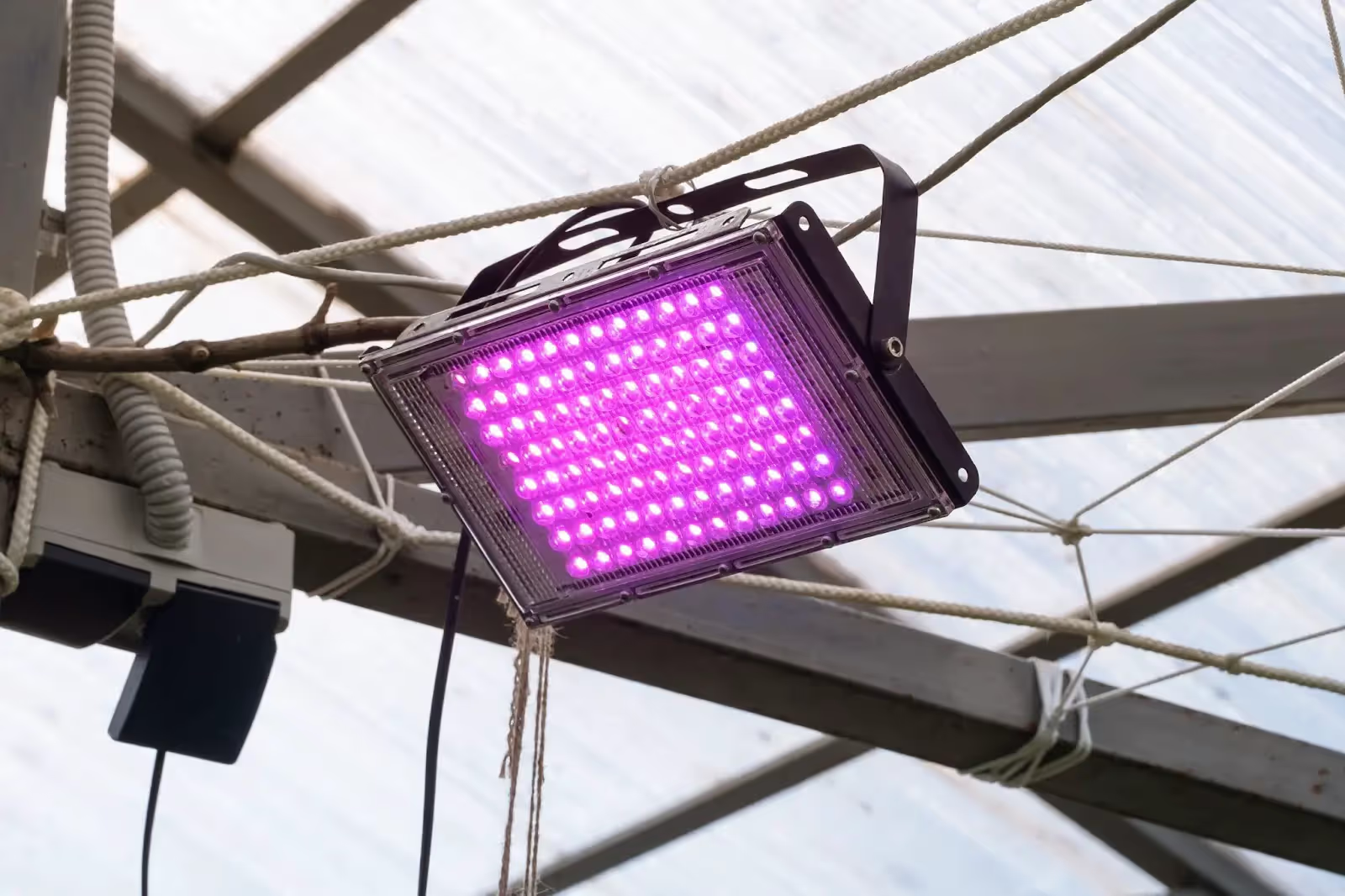
The role of LEDs in controlling leaf temperature
LEDs aren't just revolutionising indoor growing with their energy efficiency; they're also changing the game when it comes to managing the surface temperatures of leaves.
Unlike high pressure sodium lights, which bathe plants in a broad spectrum of light along with considerable heat, LEDs offer a cooler alternative with a twist.
They emit light in targeted spectrums, which can be fine-tuned for various plant growth stages without the same intensity of heat radiation.
This unique attribute of LED lights raises intriguing questions about how growers can leverage this technology for optimal plant health.
Advancements in LED technology and the strategic placement of LED fixtures have made precision lighting and temperature control more accessible than ever.
You can now incorporate a spectrum of light that includes green light and blue light to increase photosynthetic capacity.
One of the most significant advantages of using LED lights is the ability to maintain a more consistent temperature of plants’ leaves.
This is particularly beneficial in tightly controlled environments where every degree counts. With LEDs, the risk of overheating the leaves diminishes, allowing you to mimic your plant's natural conditions more closely.
This helps maintain the ideal LST and creates a stable environment that supports consistent plant development.
However, the relationship between LED lights and leaf surface temperature is a complex one.
The cooler operational temperature of LEDs means the ambient temperatures and relative humidity in your grow area play a more prominent role in influencing leaf surface temperature.
It's a balance between the light provided by LEDs and the ambient conditions of the space that you grow in, where you need to be mindful of the vapour pressure deficit (VPD) and its effects on plant transpiration and cooling.
Understanding how to measure LST becomes crucial in an LED-lit growing room.

So, what is the ideal leaf surface temperature for LED indoors?
The optimal LST for cannabis under LED lighting varies with growth stages, the specific cultivar, and CO2 levels.
Typically, the LST should be between 24°C and 30°C, slightly warmer than the ambient air in the grow space.
This temperature range supports the best metabolic activities and growth rates, though different strains might have unique requirements due to their genetic backgrounds and native environments.
Looking at LST ranges for different growth phases at a more granular level…
LST for seedlings or clones
This initial stage requires high humidity levels (75-85%) and a warm temperature to support young plants' development. The LST should be between 24–28°C during the day when lights are on and between 18–27°C during the night when lights are off. High humidity helps reduce transpiration, easing the strain on the still-developing root systems.
LST for the vegetative stage
As plants enter the vegetative stage, you can gradually reduce humidity to 70-80% and maintain an LST range of 24–28°C with lights on and 15–24°C with lights off. This adjustment period allows plants to strengthen their root systems and develop foliage and stems in preparation for flowering.
LST for the flowering stage
During the flowering stage, as a rule of thumb it's best to keep humidity between 40–60% with LSTs ranging from 24–28°C with lights on and 15–24°C with lights off. Lower temperatures and humidity during flowering help prevent mould and mildew, which is crucial for maintaining plant health and yield quality.
It's worth noting that these are general guidelines, and specific conditions may vary based on the strain of cannabis, the setup of the grow area, and the type of LED lighting used.
It might be necessary to adjust these temperature and humidity settings based on the plants' responses and the ambient conditions in your growing room.

Measuring leaf surface temperature
Knowing the importance of LST for plant health, especially under LED lighting, brings us to the crucial question: how do we accurately measure this parameter?
The right tools and techniques can provide a clear snapshot of your plant's health, allowing for precise environmental adjustments.
How do you check leaf temperature?
When growing indoors, infrared thermometers, laser thermometers, and grow room monitors are all the right kinds of tools for measuring leaf temps.
These devices offer a non-contact method of gauging temperature, perfect for capturing the temperature without disturbing the plant.
Infrared thermometer (IR thermometer)
An infrared thermometer or forward looking infrared camera (FLIR), for instance, can measure temperature from a distance, offering a quick and accurate reading that reflects the leaf's real-time condition.
Laser thermometer
Similarly, laser thermometers, with their precise targeting capabilities, allow growers to measure temperatures at specific areas of a leaf, providing insights into the variances across a plant or grow space.
Grow room monitors
Most grow room monitors measure ambient room temperature as standard, but some, like the Grow Sensor, can also take more precise measurements at various points at the leaf level.
This approach helps to create a comprehensive understanding of how your LED lighting setup impacts the temperatures of your plants’ leaves.
Maintaining the same leaf surface temperature across all plants ensures uniform growth and health, which is vital in LED-lit environments where light distribution must be even.
However, measuring LST is more than just pointing and shooting with a thermometer. It's about understanding the nuances of your grow’s environment.
Factors like ambient air temp, relative humidity, and the plant's proximity to LED lights can all influence the readings along with many other factors… Enter the Swiss Army Knife of environmental monitoring.
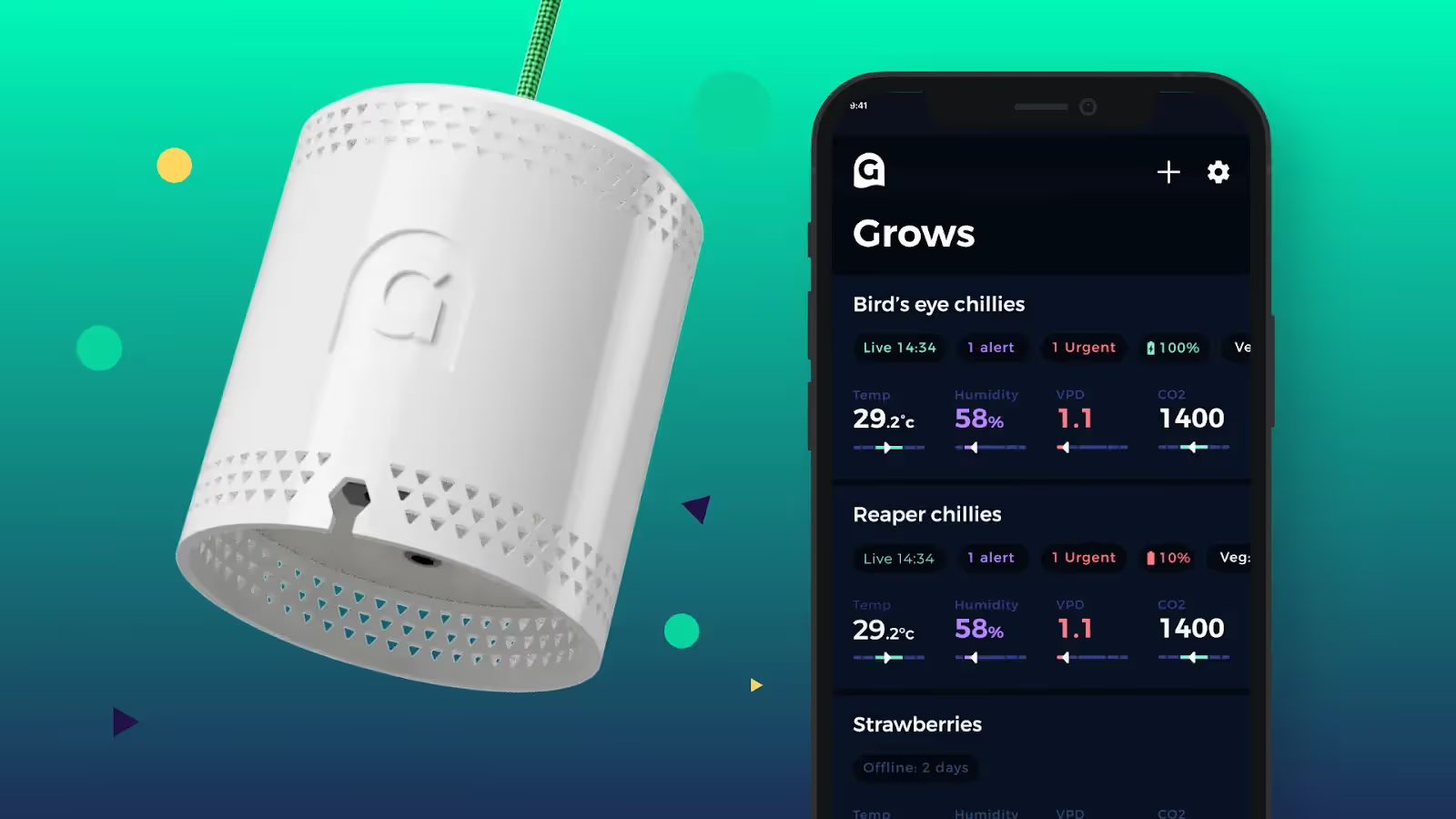
The Grow Sensor
The Grow Sensor is a cost-effective tool with a suite of cutting-edge features. All are designed to measure many factors and help you get an accurate picture of your environment.
Notably, when talking about LST, the Grow Sensor’s infrared sensor is located at the base. This sensor is equipped to accurately gauge leaf surface temperature (LST) accurately, ensuring precise monitoring.
Additionally, the Grow Sensor consistently tracks the room's temperature, establishing an optimal ambient setting for your plants.
Such precision is vital for informed plant care decisions, enabling you to cultivate the ideal environment for your plants' growth and well-being.
How to measure leaf surface temperature with the Grow Sensor
To accurately measure LST, it's essential to consider the overall plant environment. Here's how you can get precise readings:
- Record temperatures at various times throughout the day to capture how LST fluctuates with changes in light exposure, intensity and ambient temperatures.
- Take measurements from several leaves across different parts of the plant canopy, not just a single point. This will give you a comprehensive view of temperature distribution, taking into account potential variations due to lighting or airflow.
- Be cautious not to let the Grow Sensor come into direct contact with intense grow lights, as this can affect the accuracy of your readings.
Following these steps will help you gain a true understanding of your plants' environmental conditions, empowering you to tailor their surroundings for optimal growth.
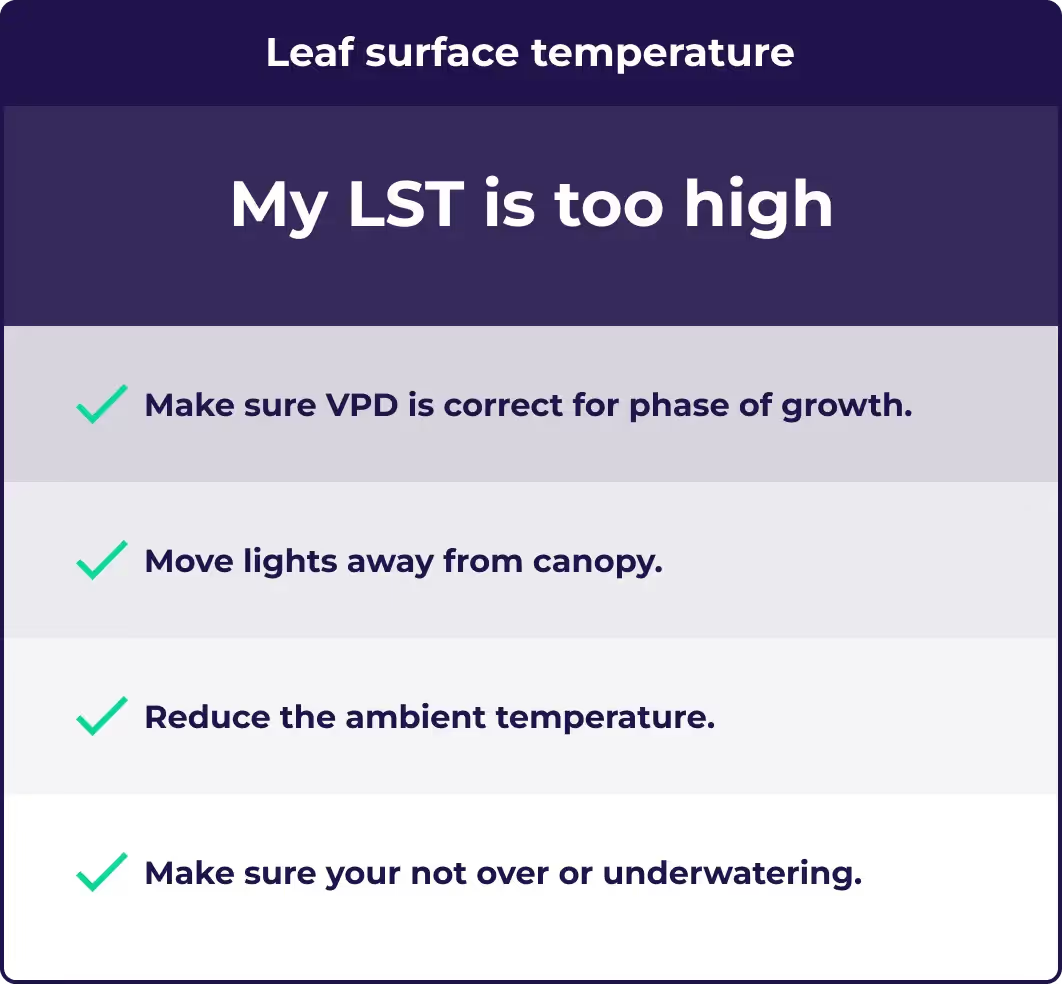
Adjusting leaf surface temperature for optimal plant growth
Maintaining the ideal LST is a dynamic challenge, requiring careful manipulation of your grow environment.
Here, we'll explore how to fine-tune various elements to ensure your plants not only survive under LED lighting but truly thrive.
Manage ambient temperature
First and foremost, managing the ambient air temperature is crucial. This can be achieved through the use of climate control systems, such as heaters or air conditioners, depending on the external weather conditions and the specific needs of your grow space.
By keeping the ambient temperature within the ideal range, you indirectly influence the surface temperatures of your plants' leaves, promoting healthier plant growth at a higher growth rate.
Optimise relative humidity
In tandem with temperature control, managing relative humidity is equally important. Dehumidifiers or humidifiers can adjust the moisture level in the air, affecting the vapour pressure deficit (VPD) and, subsequently, plant transpiration rates.
A well-maintained VPD helps keep the LST within the optimal range, ensuring efficient nutrient uptake and photosynthesis.
Consider lighting adjustments
Another lever to pull is the adjustment of LED lighting. The intensity and spectrum of LED lights can be modified to suit the growth stage of your plants, influencing their heat absorption and the overall temperature of their leaves.
Moreover, the positioning of LED lights plays a pivotal role. Maintaining an appropriate distance between the lights and plant canopy can prevent overheating, ensuring the leaves remain at a comfortable temperature.
To increase leaf surface temperature slightly in cooler environments, consider adjusting LED fixtures closer to the canopy, ensuring not to stress the plants with too much heat.
Keep on top of air circulation
Air circulation is yet another critical factor. Employing fans or ventilation systems can promote uniform air distribution, eliminating hot spots and enabling evaporative cooling from the leaves.
This helps maintain cooler leaf surface temperatures and contributes to a more stable and uniform environment.
Pay close attention to plant specifics
Lastly, it's essential to consider the specific needs of your plants. Each cultivar has its own ideal temperature range for optimal growth.
Paying close attention to these requirements and adjusting your environment accordingly can significantly affect plant health and yield.
By meticulously adjusting these factors, you can create an environment that optimises LST, paving the way for lush, vigorous plant growth under LED lighting.
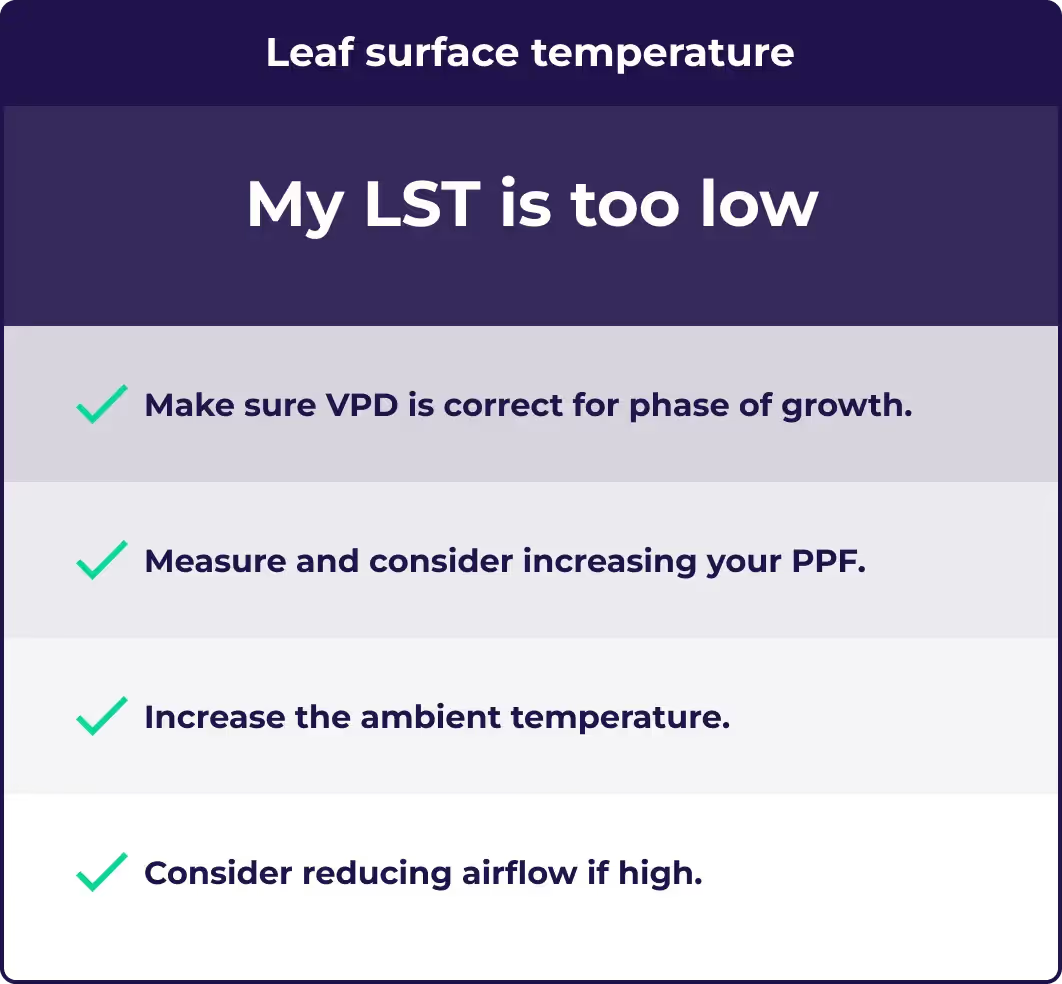
Case studies
Cannabis plants, in particular, can benefit from precise LED temperature control to optimise growth and improve yield size and quality.
The study highlights the impact of light intensity on cannabis yield, potency, and photosynthesis.
It was found that while leaf-level photosynthesis may not be a reliable predictor of whole-plant responses, dry inflorescence yield increased linearly with higher light intensities provided by LEDs, up to 1,800 μmol·m−2·s−1.
This suggests that controlling LED light intensity can enhance cannabis yield without negatively impacting cannabinoid potency.
Another study investigated the effects of different light qualities on cannabis, including LED lights.
It showed that various light spectra, including those provided by LEDs, can significantly affect the plant's growth traits, phytochemical yield, and cannabinoid production efficiency.
For instance, blue light was found to increase THC concentration, highlighting the potential of using LED lights to manipulate cannabinoid content in cannabis plants.
Takeaways
As we've navigated through the intricacies of leaf surface temperature in the context of LED lights, one thing becomes clear: the thermal environment of your plants is a mosaic of interrelated factors, each playing its part in the larger picture of plant health.
Achieving the optimal LST for your plants to flourish involves a delicate balance between LED intensity, ambient conditions, and air circulation.
Understanding and managing LST is about more than just ensuring your plants don't get too hot or too cold. It's about unlocking the full potential of an ideal growing environment. It's the difference between a plant merely surviving and one that's thriving, bursting with vitality.
LED lights have emerged as a game-changer in indoor growing, offering unprecedented control over the light spectrum and intensity.
When wielded with knowledge and care, this control can significantly influence the leaf surface temperature, steering your plants towards optimal growth and health.
But this influence isn't unilateral; it's part of a delicate balance with air temperature, humidity, ventilation, and the unique needs of your plants.
As we close this chapter, remember that the ideal LST is a moving target, one that shifts with the changing stages of plant growth and the evolving conditions of your grow space.
Keeping a keen eye on this target, armed with the right tools and knowledge, can transform your indoor grow.
Happy growing!
FAQs
What temperature should LED grow rooms be in Celsius?
The ideal ambient air temperature for LED grow spaces should typically range between 22°C to 30°C depending on your stage of growth.
This range ensures that the leaf surface temperature remains optimal for plant growth, considering the cooler nature of LED lighting compared to traditional grow lights like high-pressure sodium (HPS) lamps.
Keeping the grow spaces within this temperature range, along with monitoring relative humidity and ensuring good air circulation, helps maintain the optimal leaf surface temperature, promoting healthy plant development.
Is leaf temperature the same as ambient temperature?
No, LST is not the same as room temperature. LST can be influenced by lighting, airflow, and plant transpiration, causing it to differ from the surrounding room temperature.
What happens when leaf temperature increases?
When LST increases, it can disrupt the plant's internal processes, potentially leading to heat stress. This stress can impair photosynthesis, slow down nutrient uptake, and reduce growth rates.
High leaf surface temperatures might also increase transpiration, leading to quicker water loss and necessitating more frequent watering to avoid dehydration.
How is leaf temperature regulated?
LST is regulated through a combination of plant processes and environmental control. Plants regulate their temperature through transpiration, where water evaporates from the leaf surface, cooling it down.
Environmental factors can also be managed to influence LST, such as adjusting the intensity and distance of LED lighting, optimising ambient air temperature and humidity in the growing area, and ensuring good air circulation. These measures help maintain the ideal LST for healthy plant growth.








.avif)
